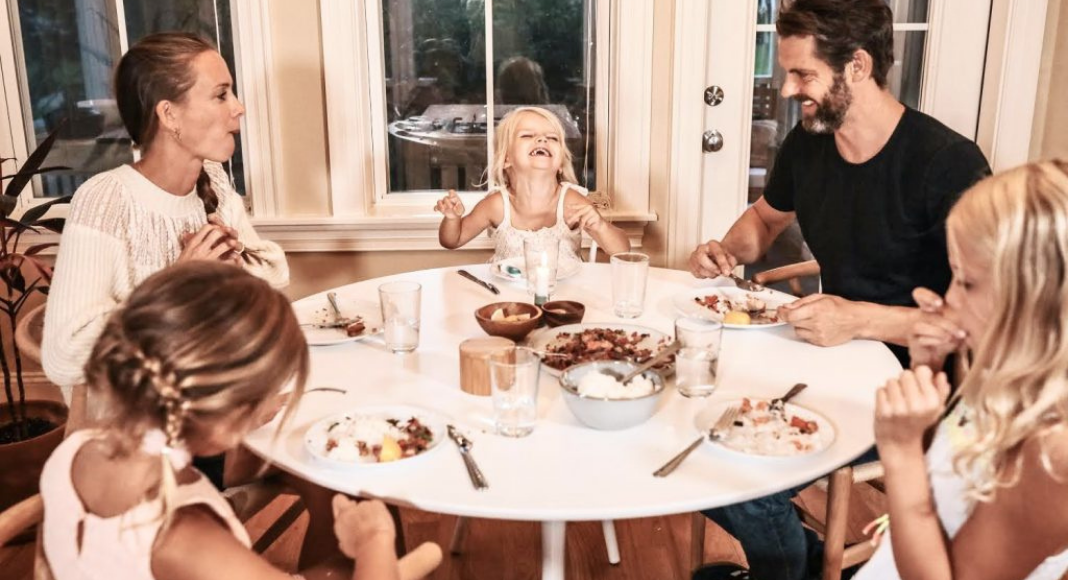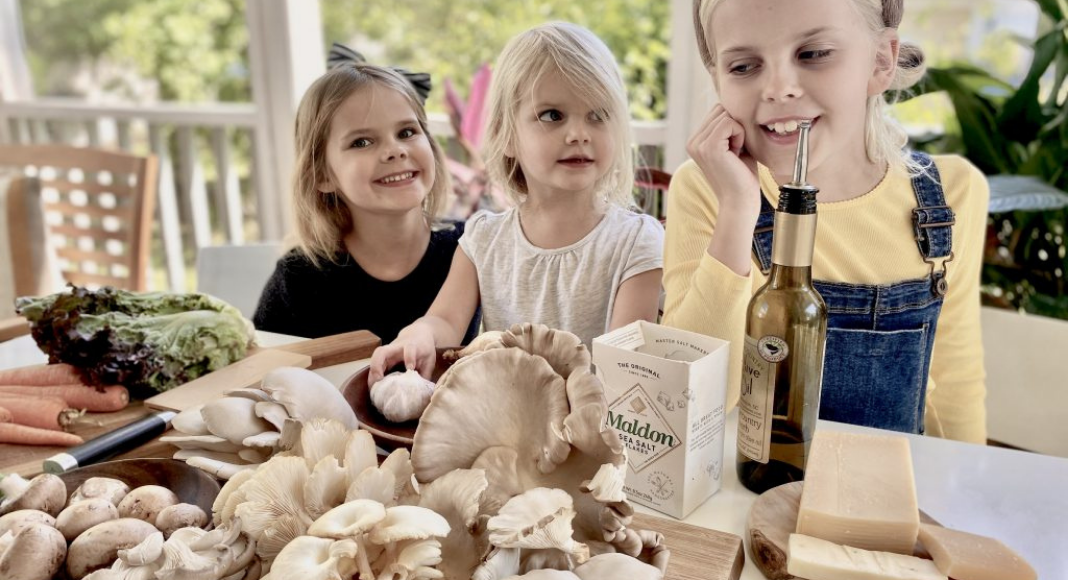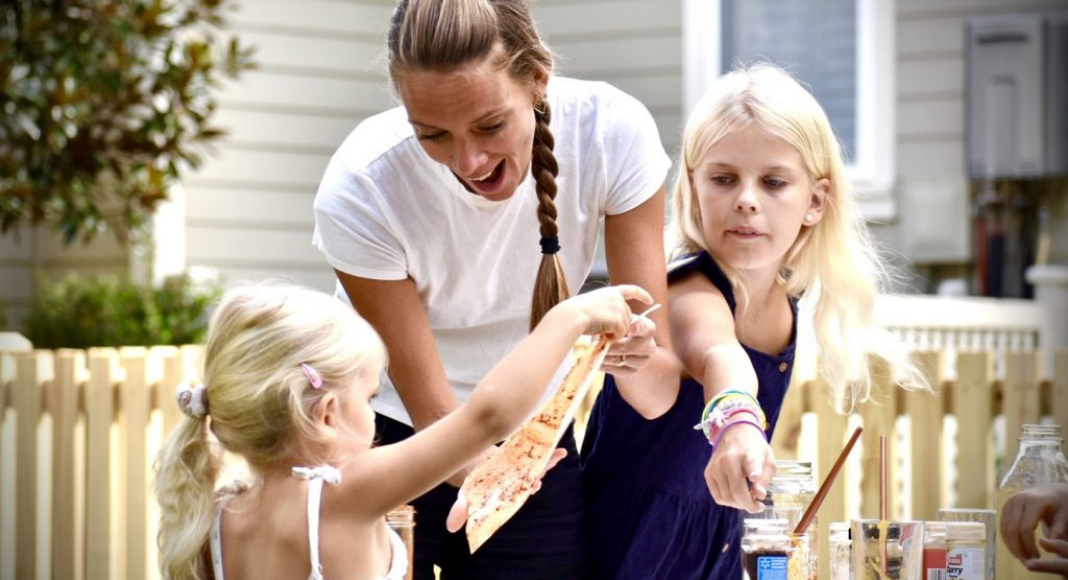“Every family has a kid who won’t eat.”
This line from the classic movie “A Christmas Story” — which came out in 1983 but was set in the 1940s — still rings true for many families today.
It definitely resonates for me since nearly every night turns into a battle to get my seven-year-old daughter to eat her dinner. My husband is a good cook and our family of four sits down together, but after a long day of school and work, it becomes a reliable source of frustration when she complains about one item on her plate or starts negotiating about how many more bites or eats ridiculously slow and then gets upset when everyone else is finished before her.

That’s why I sought the advice of Gitte Holm-Møller, a mother of three girls (Bjork, 9; Sol, 6; Nora, 3) who lives on Daniel Island and is also a psychologist who specializes in Cognitive Behavioral Therapy. Originally from Greenland and having grown up in Denmark, Gitte offers a unique perspective when it comes to family meals and getting our kids to eat.
In fact, learning about the differences between the typical mealtime in America versus in Denmark and other Scandinavian countries prompted Gitte and her husband to start their own website, Nordic Family Table. Their focus is to help families prioritize home-cooked meals, address issues such as pickiness and power struggles, and make meaningful memories associated with food.
Gitte describes more about her approach to picky eating and reinventing mealtime:
Q: What was the inspiration behind creating your website, Nordic Family Table?
A: When our little family moved to America 3.5 years ago, one of the first things we realized was how the culture around food and mealtimes was so different from where we came from. Most of the friends we made in New York didn’t really sit down for dinner, let alone eat with their little ones. They would eat in shifts while walking around, watching TV, working, etc. and they would rarely make homemade meals. My husband and I were so curious about this because where we are from, the dinner table is the center of the family and mealtimes are sacred. We used to joke that no one would ever call anyone between 6 and 7 p.m. in Denmark because everybody would be having dinner and it would be frowned upon to disturb at that time of day.
 Q: Similarly, what got you interested in addressing picky eating and family mealtimes?
Q: Similarly, what got you interested in addressing picky eating and family mealtimes?
A: My interest in pickiness and family mealtimes is in a way the culmination of my psychological background and our family passion for real food and family mealtimes. Also, I’ve always been passionate about conscious and respectful parenting and curious about the ways we as parents struggle with leaving old patterns from our own childhood behind. And when my third child, Nora, almost overnight started to reject food and would say that she didn’t like what was for dinner, even before she knew what it was, I knew that this was about more than just the food. I realized that the key to understanding her mealtime behavior was my parenting and the environment around eating. My controlling and pressuring approach and the “finish your plate” rule had to go, and once I realized that, our mealtimes were so much more pleasant and stress-free.
Q: What is the goal behind your course “Real Food Hero in 4 Weeks”? Or what do you hope parents can take away from the course?
A: My goal from the very beginning of this was to help parents get their children to eat healthier and more varied food. I think that so many parents either give up on the mealtime struggles and just feed their kids what they want OR they implement a strict, rule-based, and controlling approach. But my point is that there is another option. A more respectful and more empathic way of guiding our children around mealtimes.

For me, one of the important things to remember here is that mealtimes and food should be about more than just “eating your veggies.” We ought to teach our kids to taste all kinds of food, in order to broaden their preferences and training their taste buds. That’s also the reason why I’ve invented the term “Food Hero”: a food hero is someone who has food courage and who dares to taste, touch, and smell different kinds of food with a positive attitude. This might sound strange, but it’s actually part of being a food hero: that “newness” becomes OK. That’s really what this is all about, because if we do that, then our kids will be much more prepared for the food world out there.
Our job as a parent is to present all kinds of food to our children, and their job is to listen to their bodies.
Q: How has your research and strategies influenced mealtimes with your own family?
A: It has definitely taken out the pressure and the stress from our mealtimes. My husband and I can now sit back, relax, and enjoy mealtimes while our daughters actually eat healthy and wholesome foods. And better yet, my daughters now know that they are not going to be pressured to eat anything they don’t want to and that has made them much more open to trying and being curious about food.
And for my oldest daughter, Bjork, I think it was a big relief when we stopped calling her picky and stopped commenting on her preferences for all the white food, like pasta and bread. Quitting the “picky label” was really when it occurred to me how much we as parents engage in food shaming. And I decided that I wanted to stop doing that. The interesting thing is that when we give up on controlling our kids’ eating, they actually start being curious about food and they start to explore, and that’s the whole idea of being a real food hero — to listen to your inner cues, to allow your curiosity to lead the way, and to be open to new foods.
Q: What is the most important thing you have learned during this journey toward helping kids be less picky eaters, or you think would be most beneficial for other families to know?
A: One of the most important lessons in my course is also one of my own biggest revelations: that pickiness is not about the food. It’s about our parenting and the approach we put forth at the dinner table. That doesn’t mean that we are bad parents if we have picky eaters. But it means that this is the key to understanding and changing the dynamics at mealtimes. When we perceive pickiness as something having to do with the food itself (texture, taste, color, etc.) we will only find solutions limited to this: like serving so-called kid-friendly food with not much taste or color in it. But nuggets, pizzas, and hot dogs will not create real food heroes who are curious about all kinds of food, that will only teach them that this is how food is supposed to taste.

The thing is that when we change our parental approach and quit the control, and empower our kids with a mealtime vocabulary (teaching our little ones about our tummy being full/empty or that things can be crunchy, sweet, bitter, etc.), we are giving them authority, and kids will always grow with that – if we only let them.
What I want to teach parents out there is that we need to let go of the stiff and outdated rule-set around mealtimes, like “clean plate club” and “one-more-bite-rule” because even though they might work in the short run, they will only teach our kids to ignore their inner cues. Most parents usually value independence and empowerment in their parenting, but when it comes to mealtimes, we seem to rely on some 1960s control-based approach. But the worst part is that doing this will actually only increase pickiness, because food and mealtimes are very much about emotions, so if our kids feel pressured, they will not only reject the food, but they will also associate that food with a bad experience which will make them less likely to eat it in the future.
Q: I love that you have activities that involve kids in exploring food “in a fun, educational, and playful way,” as it says on your website. Why do you think these activities are important and/or helpful?
A: The reason I came up with them in the first place was that my daughters are always begging to play “food blind-tasting” – which we have done a lot. And when doing this, I always make sure to let them taste ALL kinds of food from the whole palate of tastes: umami, sweet, bitter, salt, and sour, and they always thought it was fun, even though they didn’t necessarily love what they tasted. So that made me wonder how we can play and experiment with food and in that way exposes our kids to different tastes. Exposure is one of the most important tools in respectful mealtimes – the more they see, taste, touch, and smell things, the more familiar they become, and the more likely they are to try them and to accept them.

To find out more, visit nordicfamilytable.com or follow on Instagram @realfoodhero for helpful tools and tips.
Check out our other Moms to See in the 843!
Moms to See in the 843: Laura Allen and a Guide to Healthy Eating
Moms to See in the 843: Kate Camp & BabyQuip
Budget-Friendly Style Tips From A Local Fashion Blogger & Mom
Moms to See in the 843: G.M. Whitley
Moms to See in the 843: Lindsey Henderson & Activism with Kids
Moms to See in the 843: Gervase Kolmos
Moms to See in the 843: ABC News 4 Meteorologist, Emily Gracey
Moms to See in the 843: Meghan Rowe & White Leaf Provisions
Moms to See in the 843: Biz Foxworth & Brown Fox Coffee Co.
Moms to See in the 843: Dianne Miley, Author & Founder of SOUL
Moms to See in the 843: Renee Smith, Small Boutique Owner
Moms to See in the 843: Valerie Skinner, Food Blogger & Personal Chef
Moms to See in the 843: Erin Phillips
Moms to See in the 843: Rebecca Rosage
Moms to See in the 843: Jessica Burns













